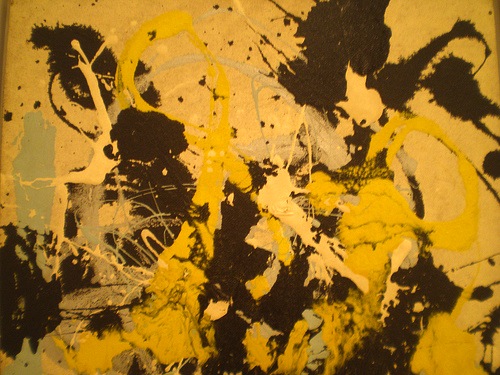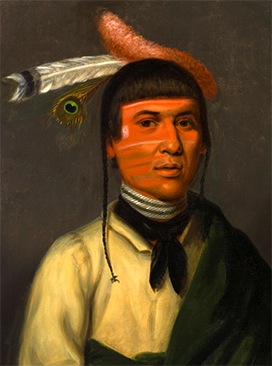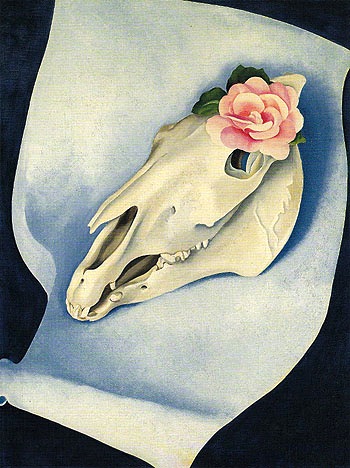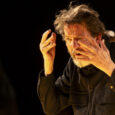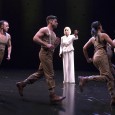Australia and America share many similarities historically. Both are young countries, both are built on a pioneering spirit, and both were quick to create their own mythologies, royalties and national characters from the very start.
Taking in the Art Gallery of New South Wales’ current blockbuster, America: Painting a Nation, I was struck though by how different the view of their early painters was to ours. And it is a difference, in one form or another, that flows right through to today.
The early landscape artists of Australia tellingly depicted this new alien landscape in English tones – our ochres and dun-olives became blacksoil and Sherwood green on canvas. The yearning to create as much of Mother England here in this dry, frightening colony was strong – so strong it meant distorting in the mind that which the artists actually saw with their eye.
Early American landscape artists, on the other hand, also distorted – but the other way: their America was bigger, better, more promising, almost every painting suffused with a golden Arcadian glow of richness and glory. These are visions not of fear but of swelling pride and pioneering thrust.
There are academic portraits too, but soon, with revolutionary energy, they too reject the British style and replace pictures of noblemen and women with Indians (Henry Inman’s 1832 portrait of No-Tin, a Chippewa chief, is dazzling) and African-American sailors. Revolutionary leader John Adams noted in 1775 that the British flavour of ‘taste and politeness’ was being pushed aside by the new republican virtue of ‘fortitude and enterprise’. A lovely anonymous naïve farm scene of 1850 is entitled “He that tileth the land shall be satisfied”.
Smartly arranged both chronologically and geographically – from the early Atlantic coast colonies of the early1800s to the Pacific coast of the mid 20th century – America: Painting a Nation is part of the 2013-14 Sydney International Art Series. Being in collaboration with the Los Angeles County Museum of Art, Houston’s Museum of Fine Arts, the Philadelphia Museum of Art, and the Terra Foundation for American Art allows a wide scope across over 90 works.
Once the initial – and uniquely American – pioneering thrust dominated the land, its energy created cities and, in them, a society that had never known such freedom of individual ambition before. Artists again glorified this energy. Images changed from naïve and homespun images of country and village life – many proto-Norman Rockwell icons of health, harvest and home – to expressions of urban dynamism, the blast of business and cosmopolitan sophistication.
James Whistler, John Singer Sargent and others, in a strange reversal, became the toast of London and Paris. Mary Cassatt’s “A Woman and Girl Driving” shows a proto-feminist view of a capable, strong mother that reflects this attractive American energy. It was the Gilded Age, an age of new opulence – money was everything, gentility and display threatened to subsume that uniquely American energy.
Europe fed many artists of the early 20th century with new palettes to express their cities – Fauve colours, futurism (the angles, machinery and roar of which fitted America like a race car driver’s glove), the dizzy 360 degree spin of cubism. But as well as painting the wonders of their vaulting cities, many artists also began reacting to the negative pressures of urban life. Edward Hopper’s “House at Dusk”, painted in 1935, is as dislocated as any of the works of this master of dislocation, its odd cropping further deepening its mysteries and shadows.
There was also a sagging sadness for the loss of the Old West – hugely popular frontier artist Frederic Remington set out to capture this dying breed and their images. He is represented here by one of his most transfixing images, “The Herd Boy” of 1905: a windblown Indian boy on a starving horse in a white-out landscape of snowy scrub, an image reminiscent of the cover of The Beach Boys 1971 album, Surf’s Up where it is used to symbolise a similar loss of innocence, albeit several generations later.
The remarkable Georgia O’Keefe went at it at a different, more positive and spiritual level than Remington, creating works that drew on nature and America’s pre-invasion cultures – in a sense, linking her with the nation’s 19th century nature-worshipping painters. Her “Horse’s skull with pink rose” of 1931 is as timeless and deep as it is not of modern America at all.
By the 1950s, American art had its own supposedly entirely indigenous Style – Abstract Expressionism. Whether this was truly an important style or just America once again constructing its own mythology, it made New York the new centre of the world of Art. Lee Krasner’s 1951 “Blue and Black” and Ashile Gorky’s “Dark Green Painting”, while introspective and dark, have that hot blade of American manifest destiny in their bold execution.
Pollock and Mark Rothko are represented here by startling, genius works that jump off the walls with the power of their vision – Pollock’s “No 22” from 1950 virtually drags you across the room. By the time you are through to the end America: Painting a Nation has, like American history itself, blown your mind with the energy compressed into less than three centuries.
But is American painting a voice that speaks unequivocably of America and its people? I wish I could say but I will leave that to perhaps the most American of American painters, Jackson Pollock, who said in 1944:
“The idea of an isolated American painting, so popular in this country during the thirties, seems absurd to me, just as the idea of a purely American mathematics or physics would seem absurd… And in another sense, the problem doesn’t exist at all; or, if it did, would solve itself: An American is an American and his painting would naturally be qualified by the fact, whether he wills or not. But the basic problems of contemporary painting are independent of any one country…”
America: Painting a Nation runs umtil February 9, 2014 at Art Gallery of New South Wales, Sydney

